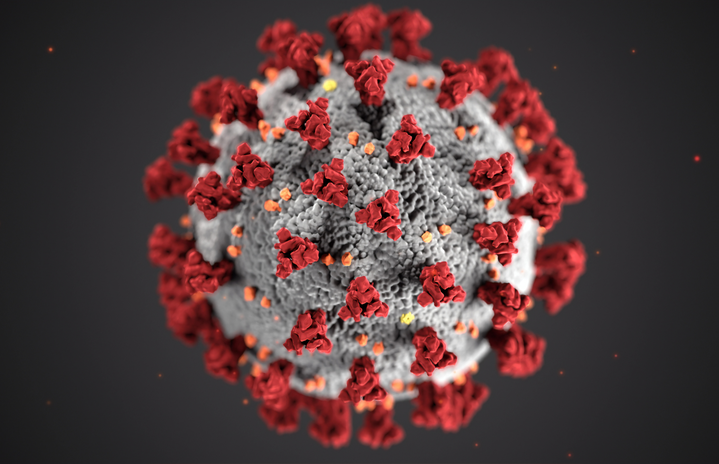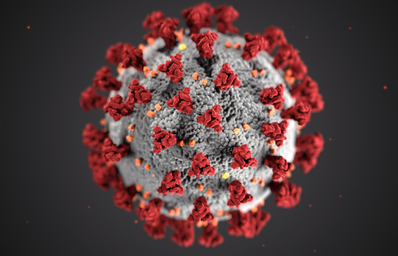Covid-19 has taken the world by storm. It has changed our lives; schooling, working, shopping, and so much more. It is hard to ignore the social changes and politics around Covid-19, but what do we know about the actual biology of the virus? In order to stop the spread of coronavirus, we need to understand what it really is.
Covid-19 is one of many viruses in the family of coronaviruses. These viruses were named for their resemblance to the sun’s corona when examined under a microscope. Coronaviruses are some of the largest viruses that infect humans. Unlike many less sophisticated viruses, coronaviruses have the ability to proofread their genes as they copy them. This allows the viruses to prevent mutations that could harm them and allow those that could help. Allowing for mutations can help a virus reinfect the same host again and again. Our immune system has a specific cell, called a B cell, that is unique in fighting a specific unwanted invader. If the virus can mutate enough so that it’s B cell no longer recognizes it, the immune system must fight it all over again. Covid has already exhibited many mutations in the short time that researchers have been tracking it.
Corona viruses are also capable of recombination, which is the combination of multiple viral genomes to create a new strain of virus. If two or more coronaviruses enter the same cell recombination can occur. Bats are the host for much of this recombination; as many as 61 viruses that infect humans are carried by bats.
What makes Covid-19 so dangerous is all of the unknowns surrounding its emergence on the global stage. Viruses are covered in spike proteins, which allow them to grab onto host cells. What scares scientists is that Covid-19 appears 10-20 times more likely to grab onto a host cell than other coronaviruses.
Covid-19 uses an enzyme found in cells called Furin to enter the host. Furin is abundant in respiratory cells, which helps explain why many patients suffer from shortness of breath and coughing. What is so alarming about the discovery of the use of Furin by Covid-19 is that this enzyme is also utilized by HIV, dengue, and Ebola.
Many doctors fear that because Covid-19’s genome is so stable, it will not become less dangerous over time. But other doctors have hope that as the virus spreads through the global population that some immunity will develop.
Learning about the biology of a disease can help demystify it and eliminate the fear developed around it. My hope in summarizing Nature.com’s article Profile of a killer: the complex biology powering the coronavirus pandemic is to help educate about what makes Covid-19 so dangerous. So when you hear people talking about how “Covid is just the flu” you can use concrete science to prove them wrong.
Wash your hands, mask up, and stay healthy!
All information and statistics used in the article below were summarized from Nature.com’s article Profile of a killer: the complex biology powering the coronavirus pandemic.



